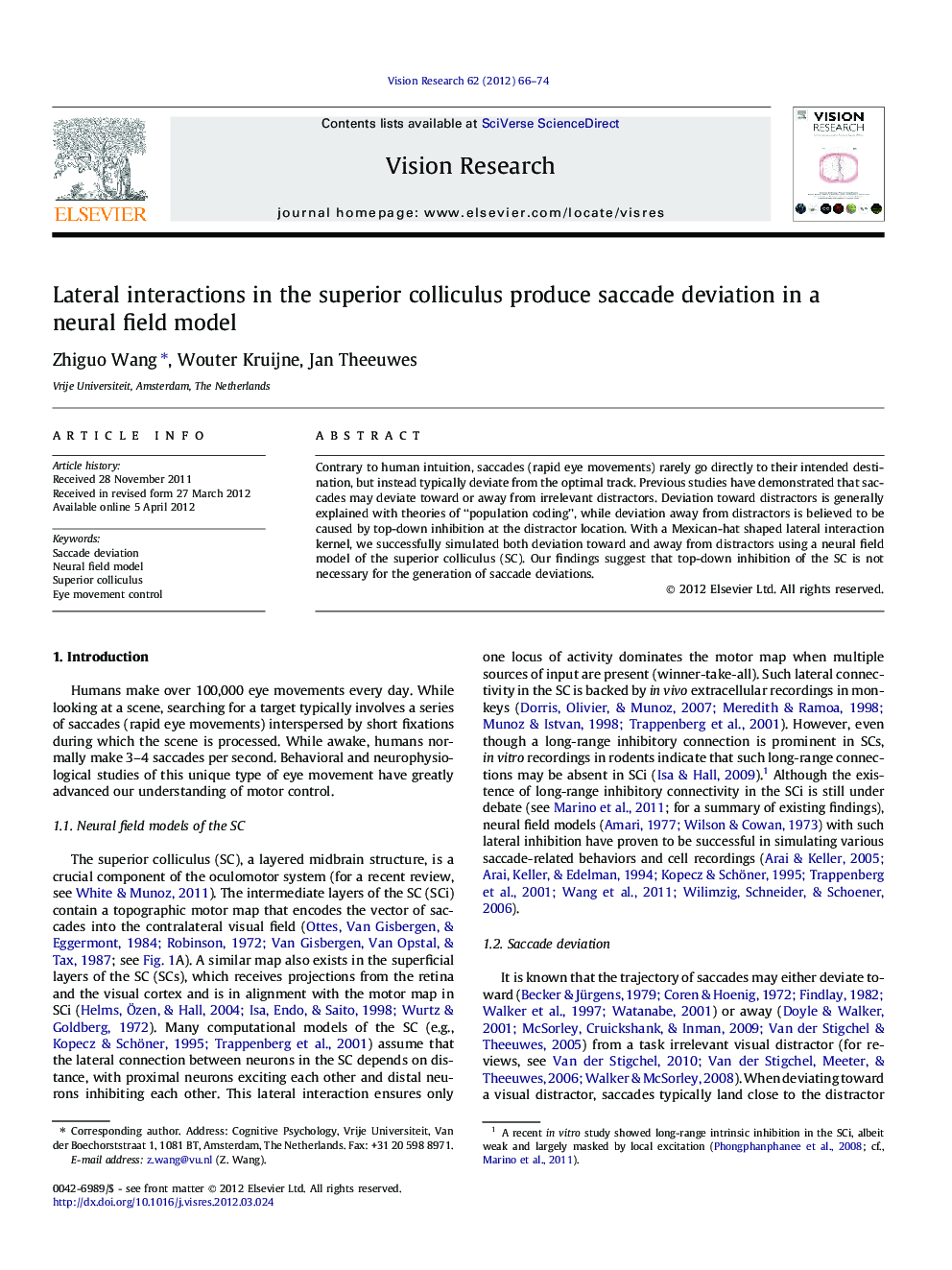| Article ID | Journal | Published Year | Pages | File Type |
|---|---|---|---|---|
| 6203683 | Vision Research | 2012 | 9 Pages |
Contrary to human intuition, saccades (rapid eye movements) rarely go directly to their intended destination, but instead typically deviate from the optimal track. Previous studies have demonstrated that saccades may deviate toward or away from irrelevant distractors. Deviation toward distractors is generally explained with theories of “population coding”, while deviation away from distractors is believed to be caused by top-down inhibition at the distractor location. With a Mexican-hat shaped lateral interaction kernel, we successfully simulated both deviation toward and away from distractors using a neural field model of the superior colliculus (SC). Our findings suggest that top-down inhibition of the SC is not necessary for the generation of saccade deviations.
⺠Saccades may deviate toward or away from irrelevant visual distractors. ⺠We modeled saccade deviation in a neural field model of the superior colliculus. ⺠The lateral interaction within the superior colliculus is sufficient to produce both deviation toward and deviation away.
